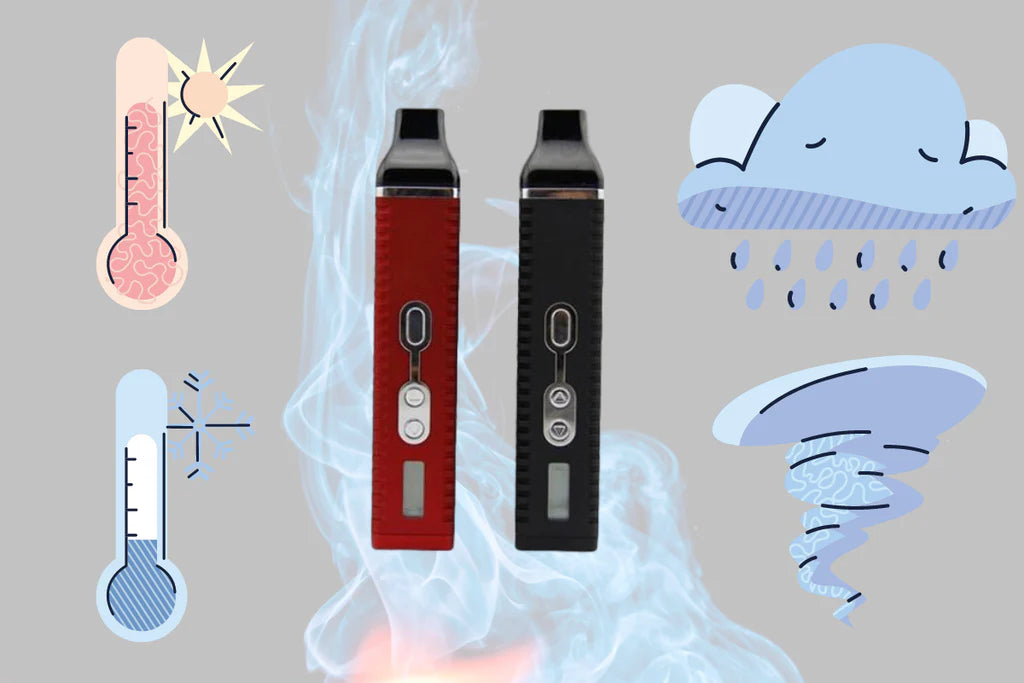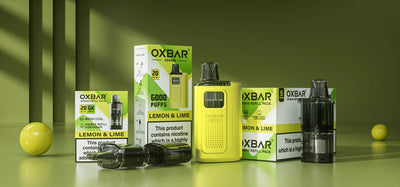How Environmental Factors and Weather Influence Your Vaping Experience
Vaping has become a popular alternative to traditional smoking, offering a wide array of flavours and devices to suit various preferences. However, external factors like weather and environmental conditions can significantly impact your vaping experience. In this guide, we'll explore how elements such as temperature, humidity, air quality, and altitude affect your vaping sessions and provide tips to optimise your experience under different conditions.
Temperature's Impact on Vaping
High Temperatures: Hot weather can cause e-liquids to thin, increasing the likelihood of leaks and coil flooding. This issue is particularly relevant for disposable vapes, which may not offer the same temperature control as more advanced devices.
Solution: To avoid these issues, store your e-liquids and devices in a cool, dry place. Keep them out of direct sunlight and never leave them in hot cars to prevent degradation of the liquid and damage to your device.
Low Temperatures: Cold weather can have the opposite effect, thickening e-liquids and making it difficult for the wicks to absorb the liquid properly. This can lead to dry hits and a less satisfying vaping experience.
Solution: Keep your vape device and e-liquids at room temperature whenever possible. If you're outside in the cold, try to keep your device close to your body to maintain its warmth.
Humidity and Its Effects
High Humidity: High humidity can cause moisture to build up in your device, which may lead to short circuits or other malfunctions. This is particularly important to consider if you live in a coastal or tropical environment.
Solution: Regularly clean your device to prevent moisture build-up. Store your device and e-liquids in a dry area to reduce the impact of humidity on your vaping experience.
Low Humidity: In low-humidity environments, your wicks can dry out faster, leading to burnt hits and an overall decrease in vaping quality.
Solution: Make sure to prime your coils properly and consider using e-liquids with a higher VG (vegetable glycerin) content, as VG is thicker and helps keep the wicks saturated for longer periods.
Air Quality and Pollution
The quality of the air you vape in can also affect your experience. Polluted air can introduce unwanted particles into your vapor, potentially leading to health risks.
Solution: Vape in clean, well-ventilated areas whenever possible. Avoid vaping in environments with poor air quality to ensure you are only inhaling the vapor and not additional pollutants.
Altitude Considerations
If you live in or travel to high-altitude areas, you may notice changes in your vaping experience. The lower atmospheric pressure can affect your device's performance, causing leaks and inconsistent vapor production.
Solution: Pay attention to how your device operates at different altitudes and adjust your settings accordingly. Reducing airflow and power settings can help mitigate issues related to high-altitude vaping.
Conclusion
Understanding how environmental factors like temperature, humidity, air quality, and altitude affect your vaping experience is key to optimising your sessions. By taking these factors into account, you can ensure that your vaping experience remains enjoyable and consistent, no matter the conditions. For a wide selection of e-liquids and disposable vapes tailored to various needs, visit our main page. Explore our e-liquid collection and disposable vape options to enhance your vaping experience.
For more detailed insights on how weather conditions can impact vaping, consider checking out external resources dedicated to vaping and environmental factors. Stay informed and vape responsibly!


